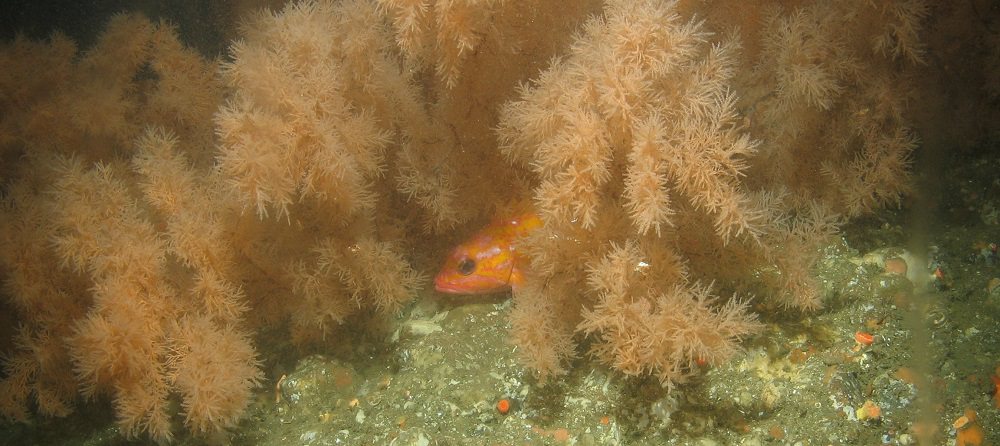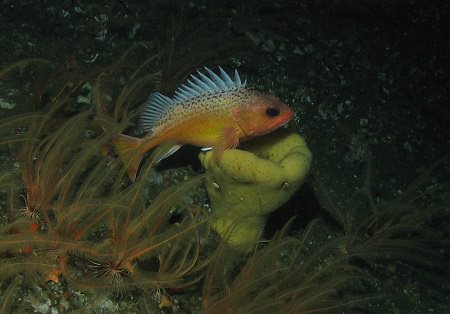Cochrane Bank

In October 2012, the sanctuary explored and mapped Cochrane Bank. Cochrane Bank is a rocky feature near the continental shelf break, located 6 kilometers south of Rittenburg Bank, and 4 kilometers northwest of Fanny Shoal. It is smaller and narrower than Rittenburg Bank, with less relief. The high relief rock present on Cochrane Bank is predominantly consolidated bedrock. Strong currents and flocculent material were evident in the water column during the 2012 surveys. A large black coral Antipathes dendrochristos was collected during the 2012 surveys. Experts determined that this specimen represent the northernmost occurrence of Antipathes dendrochristos to date. Two and a half percent of the observed fish were considered to be in association with a coral or sponge. The multibeam bathymetry, acoustic backscatter, and sea floor character data are publicly available online through the United States Geological Survey (USGS) website, and described in detail in Dartnell et al. 2014.
A technical report (PDF, 3Mb), summarizing the characterization of these this area can be found at this link. Minimum count and distribution data are available on line at the Essential Fish Habitat Data Catalog.
View a video of this special underwater place.


